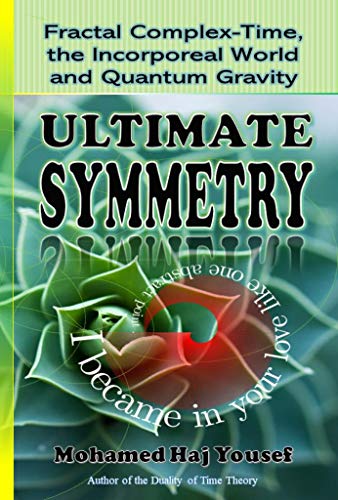
ULTIMATE SYMMETRY:
Fractal Complex-Time and Quantum Gravity
Search Inside this Book
III.2.1 The classical kinetic energy
(in the normal time):
In normal classical mechanics, the kinetic energy is the
work done in accelerating a particle during the infinitesimal time interval
, and it is given by
the dot product of force and displacement :
(3.5)
thus:
(3.6)
Now if we assume mass to be constant, so that: (and
we will discuss relativistic mass further in section III.2.5 below), we will
get:
(3.7)
So in the classical view of apparently continuous
existence, when we consider both space and time to be real, i.e. when we
consider an infinitesimally continuous and smooth change in speed from zero to
, the result of this
integration will give the standard equation that describes the kinetic energy
of massive particles or objects moving in the normal level of time:
(3.8)
The reason why we are getting the factor of half in this
equation is because the velocity increases gradually with time, which makes the
integration equals the area of the triangle as demonstrated by the first arrow
in Figure III.2.

Figure
III.2: Gradual versus Abrupt Change of Speed - Arrow
1: gradual change of speed in the outer level of time, leading to the classical
equation of kinetic energy . Arrow
2: abrupt change from zero to in the inward levels of time, leading to
the mass-energy equivalence relation , which
can not happen on the normal level of time because physical objects may not
move at the absolute speed of light.
... Space Transcendence Read this short concise exploration of the Duality of Time Postulate: DoT: The Duality of Time Postulate and Its Consequences on General Relativity and Quantum Mechanics ...
... if we assume mass to be constant, so that: (and we will discuss relativistic mass further in section III.2.5 below), we will get: (3.7) So in the classical view of APPARENTLY CONTINUOUS existence, when we consider both space and time to be real, i.e. when we consi ...
... e this Book III.2.1 The classical kinetic energy (in the normal time): In normal classical mechanics, the kinetic energy is the work done in accelerating a particle during the infinitesimal TIME INTERVAL , and it is given by the dot product of force and displacement : (3 ...
... when we consider an infinitesimally continuous and smooth change in speed from zero to , the result of this integration will give the standard equation that describes the kinetic energy of MASSIVE PARTICLES or objects moving in the normal level of time: (3.8) The reaso ...
... , and it is given by the dot product of force and displacement : (3.5) thus: (3.6) Now if we assume mass to be constant, so that: (and we will discuss RELATIVISTIC MASS further in section III.2.5 below), we will get: (3.7) So in th ...
... ;(3.6) Now if we assume mass to be constant, so that: (and we will discuss relativistic mass further in section III.2.5 below), we will get: (3.7) So in the CLASSICAL VIEW of apparently continuous existence, when we consider both space and time to be real, ...
... m zero to in the inward levels of time, leading to the mass-energy equivalence relation , which can not happen on the normal level of time because physical objects may not move at the ABSOLUTE SPEED of light. Read Other Books: The Single Monad Model of the ...
... lly with time, which makes the integration equals the area of the triangle as demonstrated by the first arrow in Figure III.2. Figure III.2: Gradual versus Abrupt Change of Speed - Arrow 1: GRADUAL CHANGE of speed in the outer level of time, leading to the classical equation of kinetic ene ...
... infinitesimally continuous and smooth change in speed from zero to , the result of this integration will give the standard equation that describes the kinetic energy of massive particles or OBJECTS MOVING in the normal level of time: (3.8) The reason why we are getting ...
... riangle as demonstrated by the first arrow in Figure III.2. Figure III.2: Gradual versus Abrupt Change of Speed - Arrow 1: gradual change of speed in the outer level of time, leading to the CLASSICAL EQUATION of kinetic energy . Arrow 2: abrupt change from zero to in the inward level ...
... interval , and it is given by the dot product of force and displacement : (3.5) thus: (3.6) Now if we assume mass to be constant, so that: (and we will DISCUSS RELATIVISTIC mass further in section III.2.5 below), we will get: (3.7) ...
... III.2.5 below), we will get: (3.7) So in the classical view of apparently continuous existence, when we consider both space and time to be real, i.e. when we consider an INFINITESIMALLY CONTINUOUS and smooth change in speed from zero to , the result of this integration ...



















